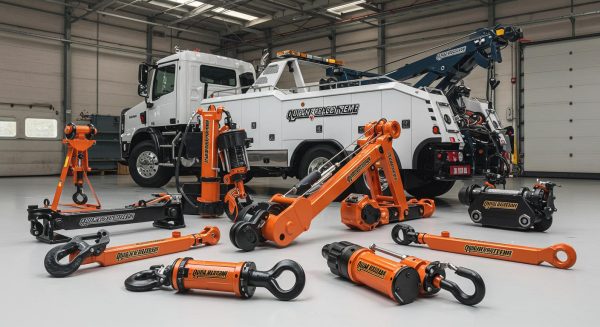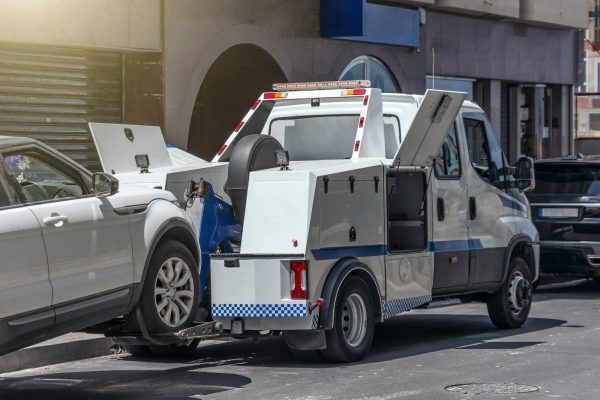Modern vehicle recovery has come a long way from the basic chains and hooks of the past. Today’s towing equipment prioritises both safety and efficiency through innovative quick-release systems and advanced towing technology.

The cornerstone of contemporary recovery operations is the quick-release system, which allows recovery operators to rapidly disconnect a casualty vehicle in emergency situations. These systems are particularly crucial when towing on busy roads or motorways where swift action may be needed.
One of the most common quick-release mechanisms found on UK recovery vehicles is the spectacle lift. This system uses a specialised frame that can be quickly lowered to release the casualty vehicle if needed. Similarly, modern A-frames come equipped with rapid disconnect mechanisms that can be operated from the recovery vehicle’s cab.
The development of modern tow dollies has also revolutionised the recovery industry. These devices allow even small vans to safely recover cars by lifting the drive wheels clear of the ground. However, it’s important to note that when using such equipment in the UK, the combined actual weight of the recovery vehicle and casualty vehicle must never exceed the recovery vehicle’s maximum authorised mass.

For professional recovery operators, hydraulic underlift systems have become increasingly popular. These sophisticated pieces of equipment can be deployed and retracted quickly while providing secure transportation for the casualty vehicle. Many modern underlifts include safety interlocks and warning systems to prevent accidental release during transport.
Safety remains paramount in the design of modern towing equipment. In accordance with UK regulations, all recovery vehicles must be fitted with amber warning beacons and appropriate lighting systems. Additionally, when transporting a broken-down vehicle, speed restrictions apply: 40 mph on motorways and 30 mph on other roads.
The industry continues to innovate, with some manufacturers now incorporating smart technology into their towing systems. These can include load monitoring sensors and stability control systems that help prevent accidents during recovery operations.
It’s worth noting that while this equipment makes recovery operations safer and more efficient, operators must still ensure they’re properly trained in its use. The Road Recovery Vehicle regulations require that all recovery equipment is regularly maintained and that operators are competent in its operation.
Modern towing equipment, when properly used, helps ensure that the thousands of daily vehicle recoveries on UK roads are carried out safely and efficiently, getting stranded motorists back on their way with minimal disruption to other road users.
The evolution of this technology demonstrates how the recovery industry continues to adapt and improve, making what was once a dangerous and difficult job both safer and more straightforward for today’s recovery operators.
